100% P-Plate Legal
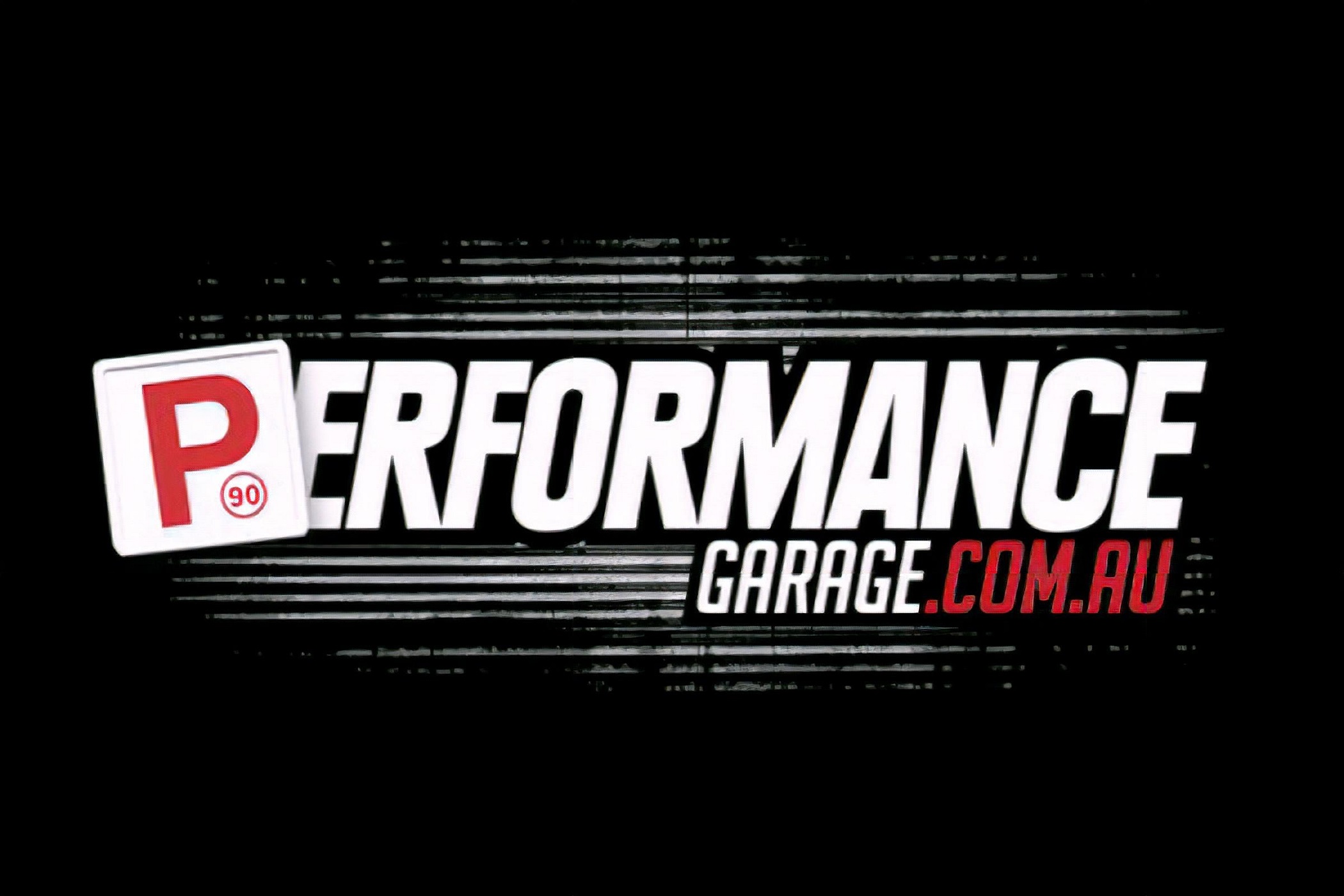
Since the early 2000s most young Australian drivers have had their choice of vehicle restricted, with laws introduced intended to reduce their over-representation in fatality figures by keeping them out of cars with a V8 engine or forced induction. Unless you are lucky enough to live in one of the states or territories that is yet to introduce these restrictions, those of you new to our roadways have likely come to terms with this limitation and believe that blandness is all that awaits you throughout your P-plater years.
Fear not!
We here at Performance Garage understand that V8s and forced induction aren't the be all and end all of performance and just because you can't drive some cars, doesn't mean that you can't have a whole heap of fun in others. We have put together a list of what we believe are the ten best performance vehicles that are 100% P-plate legal, listed for your convenience in order of factory power output. So if you've just ditched the co-driver and are on the lookout for something with a bit of poke, whip out the pen and paper and get ready to take some notes. Of course, this list is just our opinion so if there is something else that you think deserved a spot on the list, by all means let us know.
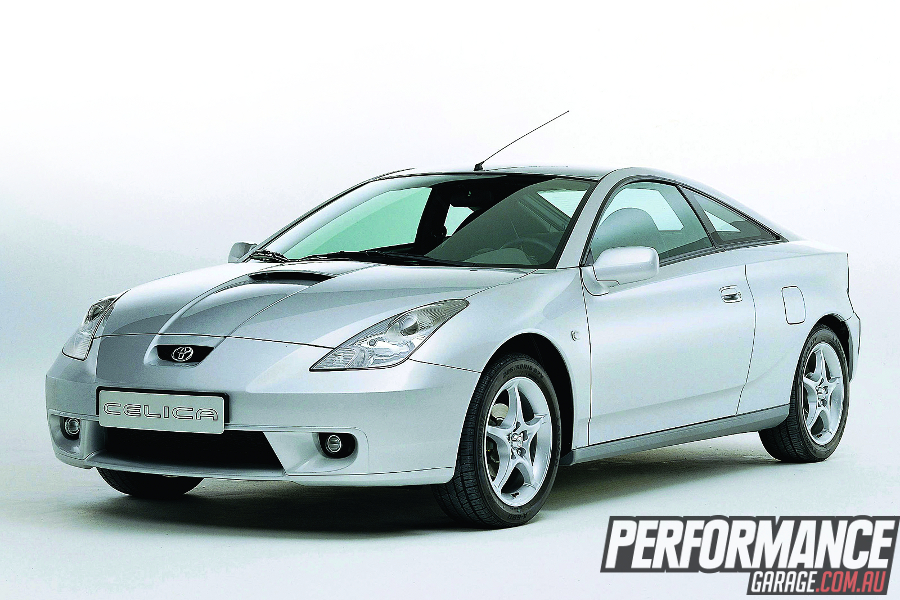
10 - TOYOTA CELICA - 142KW
The underdog. We don’t really see these cars being done up all that much and we can’t figure out why. For starters it’s a Toyota, which means it’ll provide trouble-free motoring until the end of time. Secondly, it does look stylish and it has held its age quite well; they are almost 15 years old now, but they still look modern enough to pass as a part of Toyota’s current line-up. The pedigree is there; Toyota wouldn’t put the Celica name behind a car that wasn’t worthy of carrying on the heritage that’s been around since 1970.
The interior is well kitted-out and a nice place to be. Although it can be quite claustrophobic in the back, the ergonomics for the front runners is very good. It does come with a few more creature comforts than the rivalling Honda in ZR form as well. Air-con, alloys, electric windows and mirrors, remote central locking and alarm, electric sunroof and six-stacker CD player. The rivalling Integra Type R is less equipped and is lighter but comes with more go-fast bits such as an LSD and a six-speed double synchro gearbox. But if you’re after a more street friendly coupe that is still quite quick then these Celicas are the way to go. They are very user friendly and easier to live with on a daily basis.
Performance? Well if you like Honda’s Integra Type R, then you’ll like these Celicas. With basically the same platform - front-drive layout with a well-developed chassis – the Celica uses a high-revving 1.8L NA engine to produce 140kW and 180Nm. It pulls hard and produces all the right noises. The engine is also very economical.
Overall, a great car that can be had for under $15K and let’s not forget these cars were $40,000 when new. For something that’s incredibly reliable, stylish and more exclusive than the typical competitors, it sure gets our vote.
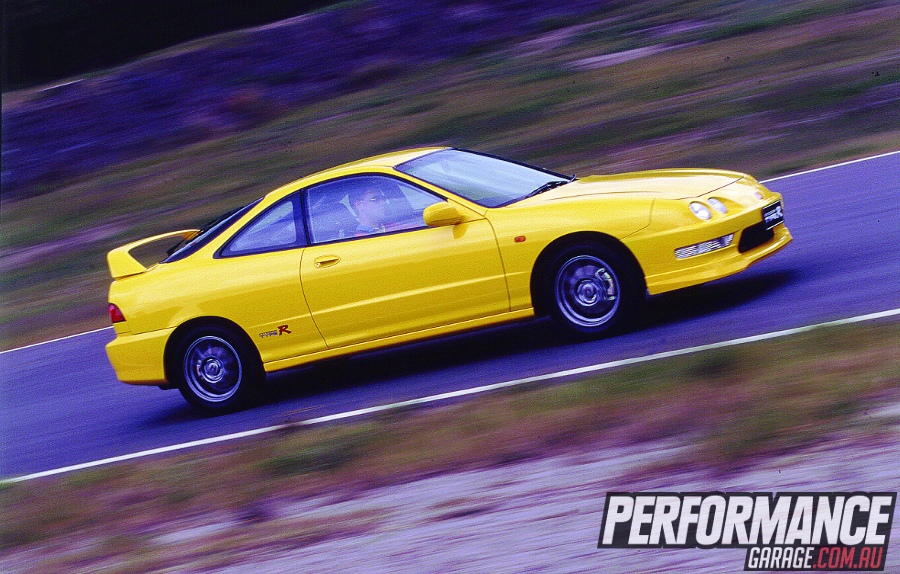
9 - HONDA INTEGRA TYPE R (DC2) - 147KW
The DC2 Type R is the ideal car for someone wanting to learn how to drive a performance car. It’s an excellent introduction into the world of street/track engineering. The suspension may be stiffer than your mum’s Pulsar and the engine will certainly need a big poke in the guts to get going, but once you figure out the pressure points, you’ll learn about power bands and torque bands and you’ll be able to fling this focused projectile around a track with the precision and speed of electricity.
The handling characteristics are very easy to understand, with progressive understeer calming your speed and controllable lift-off oversteer awakening your foolishness. There’s no snappy unpredictability to read into and anything that does catch you out will only warn you for next time in a slap-on-the-wrist manner.
The interior is well kitted out and displays a number of clues as to what this car is about. The seats hold you tight and are firmly padded. A light smattering of creature comforts is incorporated in the dash fascia, with a friendly layout of switching and controls. Air-con, CD and six-speed are the minor requirements for a comfortable journey, so Honda has left these in place from the VTi-R model. It’s all fairly simple yet pleasing.
To begin to understand what this car is about though, you need to look at the kind of scrutiny the car is designed to be subjected to. It has won Best Motoring’s notorious endurance race in the past which is no small feat considering the workout all cars involved are subject to.
Best Motoring simply thrashes a group of sports cars around a smallish circuit for a number of hours during the peak summer season. All the cars are constantly monitored in every aspect throughout the race: tyre temperature, oil, water and in-cabin temperature as well as tyre wear along with lap recording - it’s all taken into account. If any car during the ordeal exceeds the set temperature limits, then that car is disqualified.
After the total race time is reached, the laps are tallied up for each of the remaining cars. The winner is not only the car with the most laps (fastest), but also the one with the least tyre wear and the one that has endured the least amount of temperature oscillation during the run. Honda Integra Type DC2 won this battle against all sorts of cars back during its launch. It is a truly fantastic car for a real enthusiast.
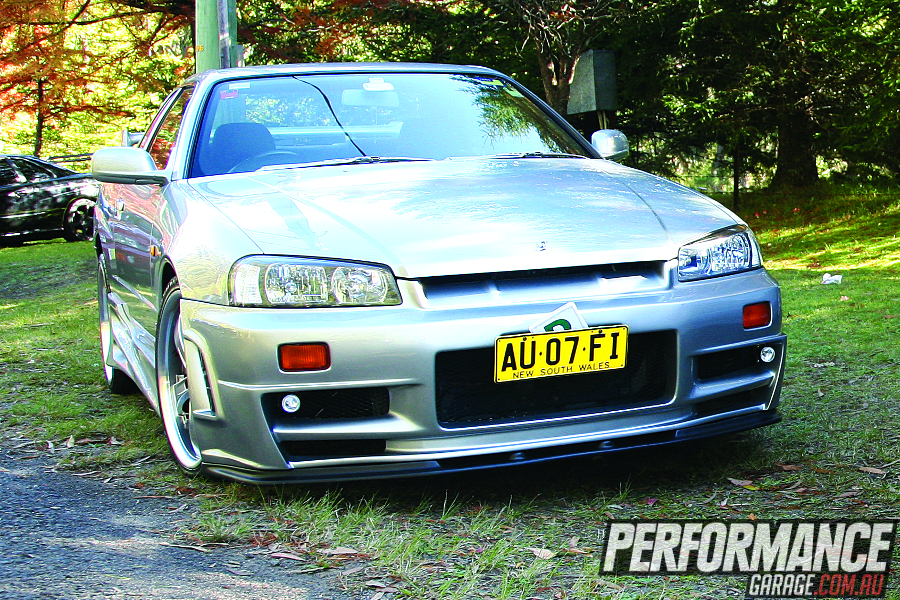
8 - R34 SKYLINE GT - 147KW
The non-turbo Skylines are a Japanese version of our Ford Falcon and Holden Commodore, which doesn’t sound too appealing. But that’s like comparing the calculator app on your iPhone to an abacus: one is a highly sophisticated apparatus using technical materials, the other is just a bunch of beads. They’re both designed to give a helping hand with arithmetic but when the next test rolls around, I know which one I would rather have handy.
The Skyline uses a twin-cam inline six with variable valve timing and punches out 147kW. Like the Supra mentioned later on, the Skyline shares much of its platform with the turbo versions, so in non-turbo specification the engine is under minimal strain even when pushed very hard.
There’s an automatic Tiptronic gearbox available too, so if you’re after a nice cruiser that’s not a Falcodore, then this could be an option for you. They have plenty of room inside for four to five adults, depending on the size of the adults you’re talking about. They also have all the usual creature comforts as most modern cars of the early century.
On the road, the Skyline will always have presence and most car enthusiasts will appreciate your obvious interest in the car scene. They are a fairly respectable choice too, with most car nuts either having one or at least wanting one at some point.
Parts for them are very easy to find and with a cornucopia of catalogues floating around selling bolt-on upgrades, there’s certainly no limit of how far you can modify these reputable icons, cosmetically and mechanically.
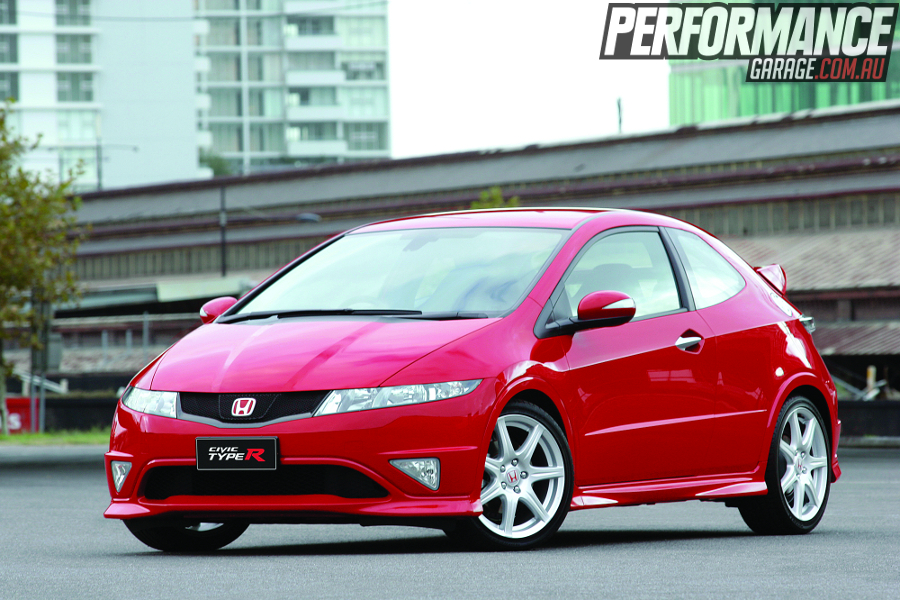
7 - HONDA CIVIC TYPE R (FN2) - 148KW
What a perfect little car this is. Around a circuit or mountain pass, this car will simply squirt past anything of decent specification. The key to its success is its weight, or lack of. These angry little engines can be spun up to 9,000rpm with light ECU tuning too, just to give you an idea of the level of seriousness we’re talking about here. Not that P-platers should be interested in going any faster. It’s a P-plater car that you could keep until well beyond your full licence and not really grow out of it.
In the original models, the hand-ported B16B produced 136kW, making it one of the most powerful cars per litre in its day. The heritage behind Honda and their Type R boffins is serious enough to fill an entire encyclopaedic volume, and their engineering shouldn’t be taken lightly.
The front LSD and serious structural improvements, including a completely seam-welded monocoque chassis, make it an absolute thrasher for track days and the spirited country drive. Just to give you an idea as to what a ‘seam welded’ thingame-bob is, in simple terms it means there are no joins throughout the whole chassis; you might as well say it’s a one-piece frame carved out of steel and aluminium.
The result felt on the road is extremely noticeable. This thing can corner with the same G-forces as an EVO Lancer or WRX STi, only they have AWD, this makes do with FWD. The 150kW 2.0L used in the latest model is slightly less aggressive than the EK9 models, but the latest ones are more reliable.
As we mentioned, light weight is one of the key points as to why these little cars fly. Type R use more exotic carbon fibre and titanium products throughout the car which results in the chuckable feel.
The only problem to occur in these cars is rattly components and worn suspension mounts and bushes in hard-driven examples. A good thing to check for is, as with all Hondas, the service book. If it is kept well serviced and oil change intervals are at every 5000km (at minimum), the longevity of this super-focused sports car can be prolonged and enjoyed for many years to come.
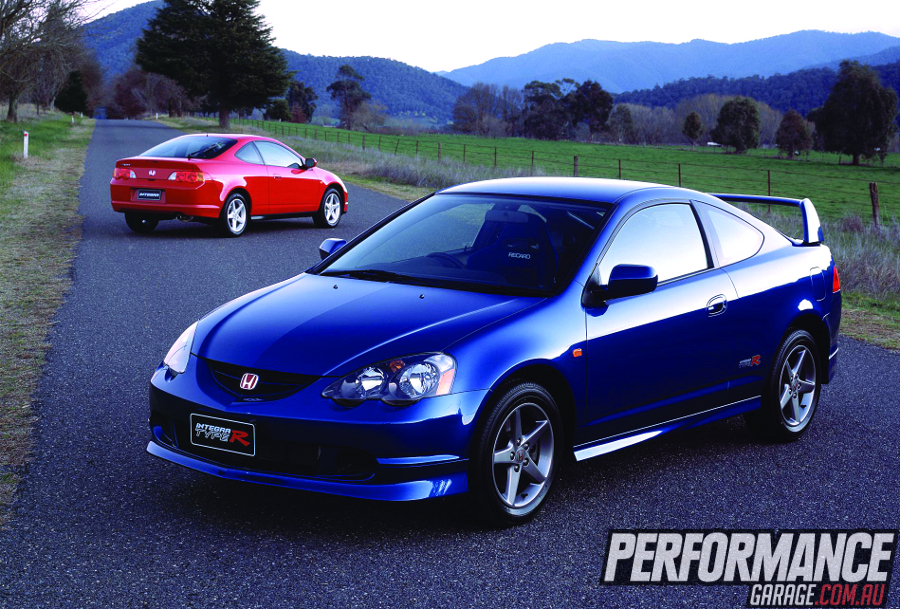
6 - HONDA INTEGRA TYPE R (DC5) - 150KW
As the last evolution of the Integra bloodline, the DC5 Integra Type R is easily one of the best P-Plater cars on the market. It offers sportiness, safety and modern technology all wrapped up into a nice little high-revving package. Not only do these great factors influence our high regard for the car, but add in the bonus of being super-cool with its stylish design and the fact that it can carry four passengers, there really is no other car like it. It has all the creature comforts like air-con and so on, but it also has rip-snorting performance by the bucket load.
Some may argue that these later, DC5, models are softer than earlier (DC2) models, but this only makes the car more drivable and versatile in everyday situations - which is where it will spend most of its time. The suspension and chassis have been stiffened and strengthened and only the shocks hinder the more direct ride. Setting the car up to handle and behave like the DC2 models is simply a shock change away, if that’s your thing.
Tune-wise, these cars are somewhat limited in Australia when compared with other popular Japanese coupes because most of the aftermarket parts are developed overseas. It can be hard to track down certain must-have components; eBay on the other hand, offers pretty much everything you’d want. Try the American sellers as these cars are a massive hit in the US.
But who wants to tune one? Seriously, in standard form you’d be hard to find another car that offers high quality performance engineering and speed along with tractable and easy to reach potentials. Combine this with a comfortable interior setting and functions… it’s simply an excellent car at the most recent end of the Type R evolution. Nothing more needs to be said.
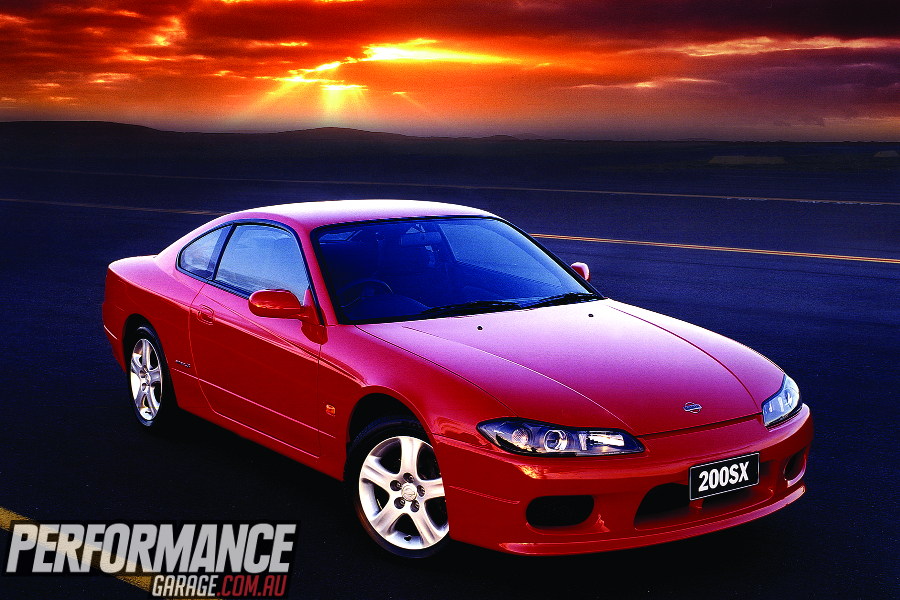
5 - NISSAN SILVIA AUTECH (S15) - 150KW
Everyone has wanted a 200SX at one point or another because put simply, they are excellent cars. Much like the Honda Integra Type R, the 200SX sports a sleek coupe design, performance by the bucket load and loads of possible upgrade options. Normally these performance prodigies would be off limits to P-platers but if you can get your hands on one of the limited run, non-turbo models, you won’t be disappointed.
The Autech Silvia uses the same indestructible SR20DE engine shared in the SSS Pulsar but produces 150kW in this Autech special. Exterior-wise, the car is identical to their turbo brothers, so it’s basically a 200SX minus the heavier exhaust manifold.
These strictly Japanese-only models output roughly the same amount of power as our Aussie 200SX turbo versions, so there’s no skin off anyone’s nose (Japanese Silvias output around 180kW due to a higher tuned ECU, programmed to run on 105 octane fuel). So with that in mind, this is a great offering and a possible definition of ‘finding loop holes in the system’.
Although tuning is a bit more difficult compared to powering up a turbo engine, there are still plenty of spanners to be thrown at the excellent SR20 engine. Quad throttle bodies, ECU tweaks and endless suspension and chassis tuning can bring these P-plate friendly coupes up to and beyond their turbo brother’s potential.
The trump card of these popular coupes is the handling though. Steering a Silvia is like smoothing clay on rotating pottery wheel: it’s complete art down to its finest form. The handling is magical, the seating position couldn’t be more spot-on if it was personally moulded, and the tremendous grip provided by the chassis and suspension makes for a perfect street, strip, drift or track car.

4 - TOYOTA SUPRA (JZA80) - 164KW
Classy, cruisey and imposing the Supra has and always will be a true contender in every scene. The non-turbo option gives P-platers a chance to ‘warm up’ their driving skills before taking on the almighty 2JZ TT bigger brother. These NA models share a lot of components as the TT version, though, and at least from an external point of view, most would be none the wiser to separate the difference.
The non-turbo lacks only components which help the big 2JZ TT operate without certain driveline components dissolving. A six-speed manual, brake upgrade and minor suspension parts are, for the lack of a better phrase, better than those in the non-turbo. All these parts can be swapped straight over to the non-turbo version, though, so if you’re that worried about breaking your driveline, whack on some overalls and bust out with some spanners.
These non-turbo parts are only degraded because there is far less stress dished out by the engine, so these standard lower-spec components are still as tough as diamonds. The bulletproof 2JZ engine is already strong enough in TT form, so removing the turbos makes it beyond the definition of strong.
Because the body is identical, adding bodykits and so forth is a breeze. You can fix one up to look like a JUN racer or an Auto Salon king with no troubles. All of the aesthetic options offered by high-end tuners such as Veilside and Vertex can be bought and bolted straight on.
Back to the car, though. The Supra will always have a high status, so no matter how far you go with mods or what little you mod, the car will always emit an imposing presence. Driving, the Supra is a little cramped inside and rear passenger legroom is nonexistent, and unless you like squeezing into the cabin like a plasticine model stuck to the window, we’d suggest the car is only a two-seater.
Once you and one friend are out and cruising, you’ll notice the impeccably solid feel to the chassis and steering. That’s because these chassis are rated to handle in excess of 1000hp in standard form. Apart from the two-seater factor and all the attention you may get from the authorities (confusing it for its doublesnail brother), the Supra is definitely a serious consideration for a safe, reliable and high-status P-plater car. It’s also got huge sex appeal and is known for its seductive mannerisms.
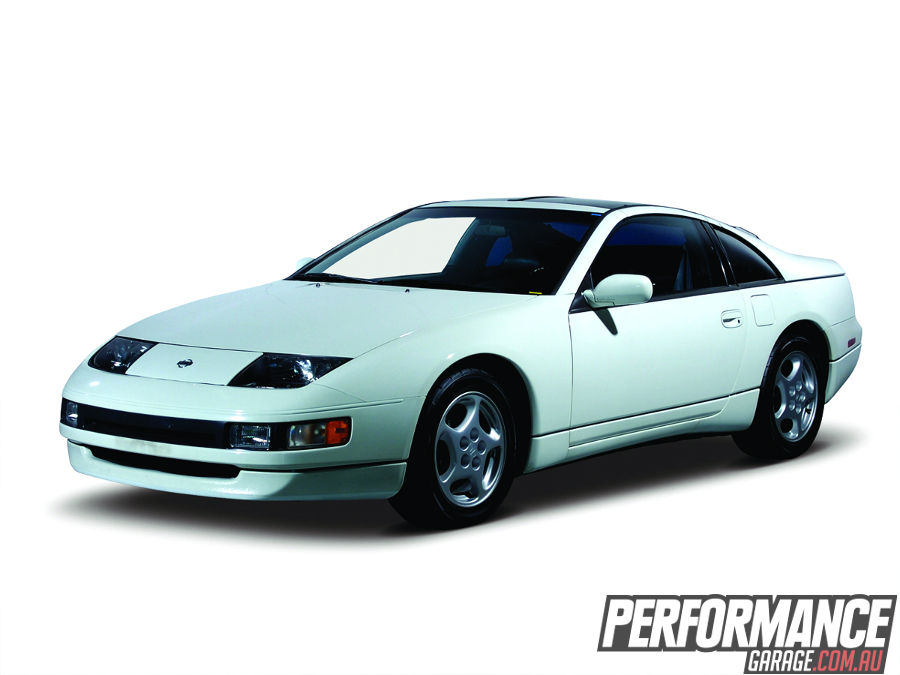
3 - NISSAN 300ZX (Z32) - 166KW
A technical marvel back in the days, the 300ZX is part of a very thick heritage from the range of Nissan sports cars being offered by the marque for over 30 years. In the Z32 form, the 300ZX showcased four-wheel steering, only ever seen on Porsches at the time (and of course the GT-R), a svelte twin turbo V6 engine and a very aerodynamic exterior design. When it was launched in 1989, the aerodynamic guise left onlookers sceptical and curious as to what type of ‘supercar’ it actually was.
They weren’t as sporty as the GT-R – which was a serious, more nimble high-performance track car - the 300ZX was more of a grand tourer designed to relentlessly disperse hundreds and hundreds of kilometres in comfort and style. Although, they are quite big and heavy, weighing in at around 1500kg depending on auto or manual and year model. The non-turbo models were still just as grand and had variable valve timing, which was quite advanced for a 1989 car, and produced 166kW.
The 300ZX has acquired a fair amount of street cred over the years, mainly with the release of the 350Z and 370Z. It seems Nissan’s ‘Z’ cars have come a long way, but there are a few things you should know about before deciding to buy one of these early examples.
If you’re a purist, you want only the best, so hunt for the best. Dodgy examples can easily be avoided by simply taking a look at the log books and servicing details. Also, Japanese imports may seem like a more authentic and cheaper option at first, but you have to take into account that the cars to come out of Japan have been more or less rejected out of their country and trickle their way down under. If they were transported via a ship, then rust will be a very common problem, especially in earlier models where oxidisation has had time to have the greatest impact.
The best bet is to go Aussie. These models are normally owned by purists and cherished from day one. They’re also less likely to be abused by Japanese time trials through mountain passes.
An overall excellent concept, just be wary of the example you’re thinking of buying.
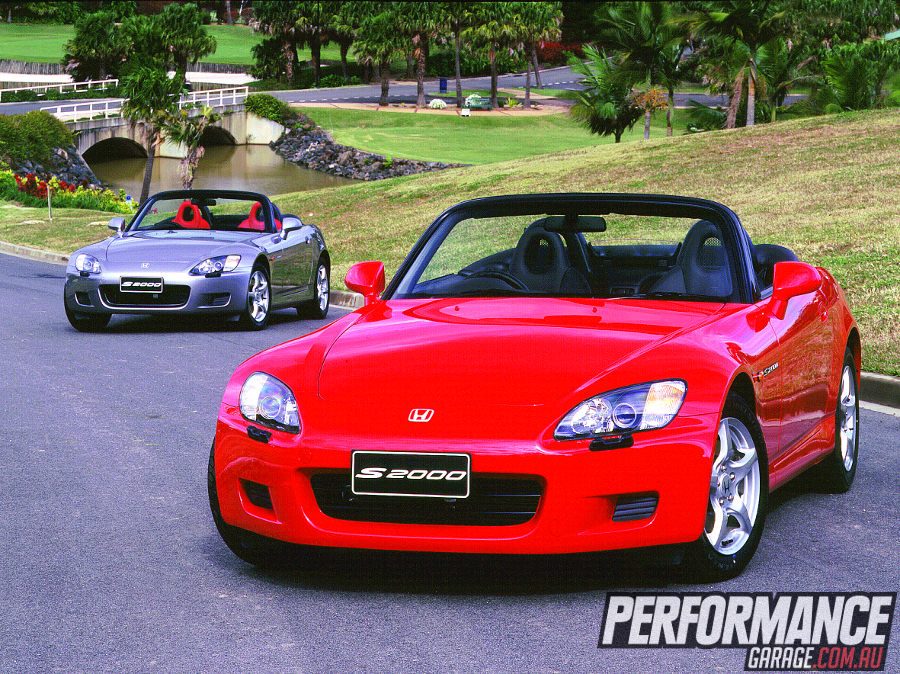
2 - HONDA S2000 - 177KW
This thoroughbred Honda has heydays traced back to the sixties with the production of the Honda S600 and S800. This is no hairdresser’s runabout. It’s a true, heritage-backed, sports car. It uses a 2.0L NA engine capable of revving beyond 9,000rpm to produce 177kW. The six-speed manual, tight LSD and superior structural integrity of the chassis and components makes it an absolute hoot to drive, with fun-factor gauges soaring somewhere into the ‘We-Heee!’ region.
Speaking of structural integrity, the S2000 has been engineered and thoroughly tested on Germany’s Nürburgring - part of only an elite group of manufacturers’ cars that were tested there at the time of it’s production. Only the very serious and competitive manufacturers venture there to hone their cars to perfection. Countless laps of the 21-odd-km circuit mercifully strains cars into uncovering any weaknesses. The manufacturer can then upgrade the car until there are no weaknesses left to hide.
Being a Honda, it’ll be more reliable than a wood-burning stove too, as long as it’s well nourished and serviced properly. If it is well looked after it will respond by tantalising you with unbridled performance that can be felt through the seat of your pants every day.
The interior is very well equipped with air-con, leather trim, power accessories, and a retractable roof. The only drawback to these cars is that they are a strict two-seat roadster. This can push insurance premiums into a less desirable territory.
Cosmetically, the cars can be enhanced by a number of bodykit manufacturers, although, a fresh paint job and a decent set of rims is all it takes to amplify this already awe-inspiring ride into something even more unique and individual. If you do leave it completely standard, however, you’ll still be taken very seriously and gain free-entry into the very privileged world of real car enthusiasts.
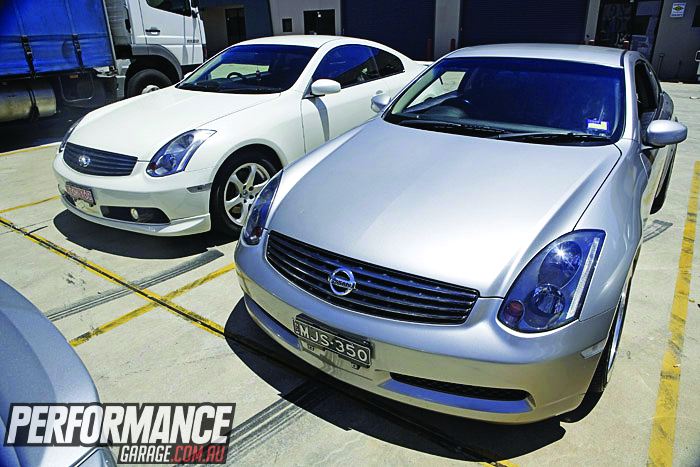
1 - NISSAN SKYLINE 350GT - 195KW
The biggest, heaviest and most powerful P-plater car in our list. The Skyline 350GT is a grand tourer, luxurious poser and a mountain pass hustler all rolled into one. Because the chassis was developed in conjunction with the 350Z platform, strenuous testing was done to achieve the sturdy yet nimble finished product.
The introduction of the V6 allowed Nissan to place the engine and its weight in more desirable areas of the engine bay. The old inline six was squeezed in taking up every square centimetre of engine space. The new V6 was less claustrophobic and mounted well back in the engine bay. More than half of the engine’s weight is placed behind the front axle, which Nissan calls a ‘front-mid engine’ layout.
The 3.5L V6 shared from the 350Z produces 195kW – nudging the limit of P-plater restrictions. The coarse howl and low-down torque gives the driver a nice feeling of performance and security that is unfazed by hills and highway overtaking.
The handling is very adequate for the size and type of car, most would be hard-pressed to keep up during any kind of acceleration stint. With the six-speed manual gearbox, the big Skyline will accelerate from 0-100km/h in 6.0secs in an effortless swathe of progressive composition.
The Skyline 350GT certainly has presence and an upmarket feel. The modern one-piece look of the curved exterior design may not age very well, but right here, right now, it’s still doing just fine. And since its launch back in 2001, it already looks a big generation leap ahead of its older brothers.
Comments
No posts found










